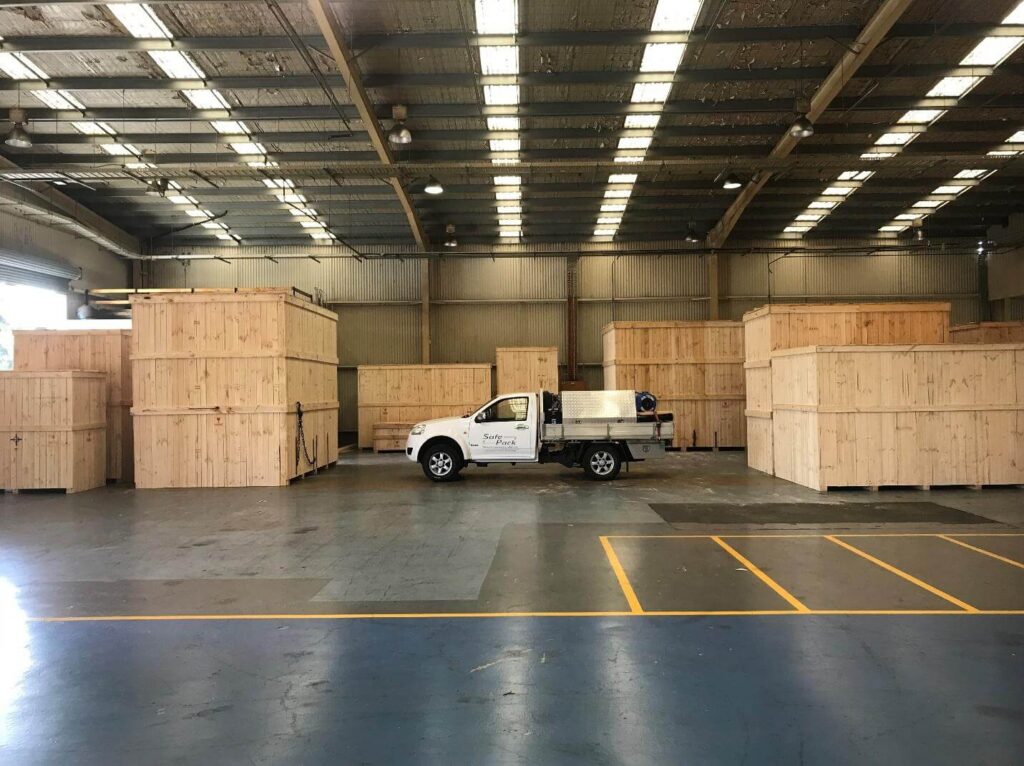Best Timber for Shipping Cases and Crates

It’s hard to beat wooden shipping crates in many aspects, namely cost-effectiveness and versatility. Timber may not be as strong as steel or as flexible as plastic, but it’s just strong enough to get the job done. Over the centuries, timber crates have stored and transported bulky items of varying weights, from large quantities of fresh produce to heavy loads like heavy machinery.
Sometimes, it makes you wonder how timber crates manage to carry various things reliably. Proper wooden crate design and construction is one factor, but we believe it comes down to the species of wood used. Almost any species of wood can be fashioned into quality wooden shipping crates for Melbourne businesses, but only several can do the job they’re built for.
Pine Wood
No other kind of timber is more ubiquitous than pine wood, especially in creating wooden cases and crates. It sees a lot of use in a range of applications, as pine trees exist in large numbers, at least in the northern half of the world. North America alone is home to around 60 pine species, including one most used for timber packaging solutions: the Southern Yellow Pine.
Pine is a type of softwood. As the term implies, softwood is less durable than hardwood but is easier to process into timber and, eventually, crates. To bolster its survivability in harsh conditions, pine wood undergoes heat or pressure treatment. As far as crates go, this treatment is required under ISPM-15 guidelines to curb the spread of invasive pests.
Supply is almost not a problem for pine due to its abundance and, more importantly, ability to grow quickly. Most pine trees can reach a height of up to almost a metre in one year and over three metres in five years. While Australia doesn’t have many pine trees, enough pine wood is in circulation globally to have a steady supply for making wood shipping crates.
Oak Wood
Oak wood is pine wood’s hardwood counterpart, in plentiful supply among other hardwood species and naturally resistant to the elements and insects. Also, being a hardwood makes it a more durable option for building timber crates.
Oak is a good kind of timber for building wood crates that can better withstand accidental or intentional impact. This is because hardwoods have higher wood densities, with oak being one of the densest at 0.59-0.90 g/cm3, compared to pine’s 0.35-0.85 g/cm3. To put it simply, there’s almost a gram of wood for every cubic centimetre of oak.
Durability, however, has a trade-off, which is the difficulty in processing into timber. Most hardwoods require special tools and techniques to cut them into the proper pieces and shapes, which adds to the cost. As a result, oak crates lag behind pine ones in terms of use.

Cedar Wood
Cedar trees are smaller than pine trees, but their wood is highly sought after due to its two properties: lightweight and natural insect resistance. The former only applies to specific types of cedar, while the latter is innate in all types.
Australia takes the spread of invasive creatures seriously, as they can ruin its ecosystem when left to their own devices. Wood shipping crates tend to be their preferred method of going from place to place, be it within or beyond the country, feeding on the wood for the entire duration of the journey.
Cedar wood fits its needs thanks to its natural oil that’s deadly to most insects and rodents when exposed to it. There are even studies looking into the applications of cedar wood oil in protecting less pest-resistant species of wood. When treated under ISPM-15 guidelines, cedar wood can make for ideal wooden crates for shipping bulky items and fragile goods worldwide.
Birch Wood
Birch is somewhat of a rarity in making wooden shipping crates compared to the different types of wood we’ve discussed. One possible reason is that birch trees are girthy, being only a little over half a metre wide at peak maturity. Unless the crates are small enough, making the panels for timber crates can be a challenge.
However, there are at least two ways crate manufacturers work with birch wood. The first is when building open-slat crates for holding produce and other foodstuffs. The second is when creating plywood crates, as its impressive strength-to-cost ratio makes it a great veneer for creating plywood material.
While not as hard as oak, birch wood can still be hard enough for crate construction, with a wood density of about 0.65 g/cm3. Yet, for such a density, the wood is known to be elastic and relatively easy to work with.
Conclusion
It can be hard to tell the kind of wood your crate is made out of, more so for untrained eyes. Regardless, one important caveat here is that any of these types of wood make for quality timber crates for any use.
If we have to pick a winner, though, you can’t go wrong with pine. Between the plentiful supply of pine wood and the ease of fashioning it into custom wood crates, pine wood is simply hard to beat.


